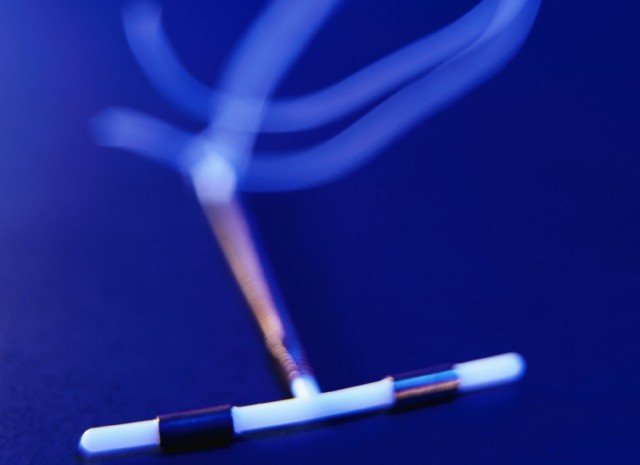"So we had a whole generation in the '70s and '80s ... where doctors and clinicians weren't trained and women didn't have that option," says Dr. Jeffrey Peipert, a professor of obstetrics and gynecology at Washington University in St. Louis.
That training gap remains, even with newer and safer IUD models, Peipert says. And family medicine residents may no longer be required to get training in contraceptive counseling, as NPR has reported.
The two common intrauterine devices in the U.S. are ParaGard, which releases copper to interfere with sperm, and Mirena, which prevents pregnancy with the hormone progesterone. There is still a slight risk of pelvic inflammatory disease. But Bayer Healthcare Pharmaceuticals, the maker of Mirena, says fewer than 1 percent of users of its device get the infection. More common side effects for women using IUDs are irregular bleeding or cramping.
Upfront costs also limit access; the price of the device and getting it inserted can cost hundreds of dollars.
But Mirena works for up to five years, and the copper IUD up to 10. So over time, they can actually be cheaper than monthly payments for, say, the pill. And IUDs, like other contraceptives approved by the Food and Drug Administration, are expected to be covered for most users under the Affordable Care Act.
Peipert and his colleagues figured that if they provided trained experts, educated women about their options and helped with costs, more women would choose IUDs.
For their study, they enrolled 9,256 teenagers and women, ages 14 to 45. Fifty-eight percent of participants opted for intrauterine devices. Compare that to about 5.6 percent of women using contraceptives who chose IUDs from 2006 to 2010 in the U.S. Plus, the researchers saw a drop in teen pregnancy and abortions in the study group.
The initiative, known as the Contraceptive CHOICE Project, is expanding to other cities and even possibly to Africa, Peipert says.
What's Next For Women
"We're just getting past the period of the myths and the lack of training and the misconceptions about these methods," Peipert says.
For one thing, there has been confusion over who should use IUDs. Marketing for Mirena, for example, has been geared toward women who had at least one child. But in September 2012, the American College of Obstetricians and Gynecologists issued new guidelines stating that implants and intrauterine devices "should be offered as first-line contraceptive options for sexually active adolescents."
A new brand is designed specifically with younger patients in mind, Peipert says. Skyla is basically a new version of Mirena: slightly smaller, with a lower level of hormone. It works up to three years, as opposed to five with Mirena.
Another hormone-releasing IUD could be on its way. In June, a nonprofit pharmaceutical group in San Francisco announced a partnership with the global pharmaceutical company Actavis, aiming to reduce cost as a barrier to contraception.
Peipert expects even more invention around IUDs in the future.
"I think we're also going to see in the future other alternative devices. I think we're going to see this market expand," he says. "I think the CHOICE Project has provided good evidence that IUDs are safe, effective, highly desired, and I think we're going to see companies coming up with new ideas, new IUDs, maybe lower-cost alternatives."
